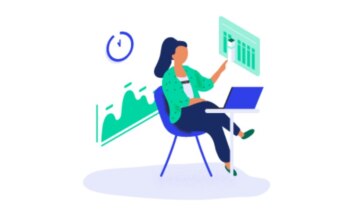Whether they had a physical event or not, many brands are launching digital events to help build their pipeline. But digital events are not easy to do.
You can’t just spin up some type of event software, get some well-known experts to speak, and assume that every person who attends is interested in your products and services. There’s a lot more to think about before and after your event.
This article originally appeared on diginomica.com. Shared with the author’s permission.
I had a conversation with Tessa Barron, VP of Marketing for ON24, about the increasing growth of digital events. She said that the evolution of digital events is not a surprise; we were moving in this direction for a while. But she indicated that for many brands, setting up a digital event was a panic move to make up for the pipeline lost from not having a physical event. Most brands simply try to do a direct transfer of the physical event to digital, she said, and that’s a huge problem.
Digital events can work, but the right technology is only part of the answer. You need a different strategy and process for digital events. When you do it right, the data you can get will be better and more useful.
Rethinking the digital event format
Some formats Barron has seen work well include having a live webinar-style event and then several break-out sessions on-demand or holding your event over two weeks with prepackaged sessions delivered in different formats, or across different timezones. Barron explained that her company held the same event across four timezones to bring a live event to everyone at a time that is best for them.
We talked about the difference between paid digital events and free ones; there have been a lot of free events available; however, some companies are having paid digital events. Barron said that’s fine, but when you are charging for attendance, you have to think carefully about what is the benefit to your audience. Content is not enough of a benefit for a paid event; there needs to be some tangible outcome.
She offered the example of WebinarWorld, ON24’s live event. As part of their event, they offered a form of event certification. After a live event, there was a five-part on-demand webinar-based certification. ON24 didn’t charge attendees to get this certification, but it’s an example of something you could offer to make charging for a digital event worth the money.
Digital means data – useful data
Data is probably the most significant advantage of holding a digital event over a physical event. If you have the right technology, you can capture your audience’s behavior and interactions in ways you could never do at a physical event. And you can use that information to create relevant conversations with the right people when the event is over.
With physical events, every person that attends is passed on to Sales, with an assumption of their intent and interest. But most of the time, Sales waste a lot of time figuring out which leads are viable.
You can do things differently with a digital event. Barron said you need to build events based on the data you want to collect. Run polls to engage your audience and to understand their intent (what do they want, what matters to them, are they interested in your product). Include things like surveys and embedded CTAs to provide similar insights.
Barron told me that it’s important to have the ability to differentiate intent. She said the typical field marketer has never dealt with more than 500 leads at a time, but with digital events, that number can grow into the thousands. Too many leads cause the process of sifting through MQLs to break down. Data from activities like polls and surveys, from QAs, from the sessions people attended, and the time they spent at the event, gives the field marketer the ability to segment people and prioritize leads for Sales.
When you have a physical event, you can create 1-1 experiences with some of the people that attend. You can’t necessarily do that with a digital event. Still, you can create an event strategy that enables you to create those 1-1- experiences after the event – with the most important people.
It’s not the end of the physical event
Barron doesn’t believe that physical events are over. There will always be a mix of the two. But she does see the physical event getting limited to a tent pole event – one of several major parts of a bigger campaign or set of campaigns.
It may be that in-person events will be held specifically for key prospects and customers – the ones a brand determines through one or more digital events and other campaign activities.
My take
I’ve appreciated the opportunity to attend events that were once physical that I am not usually able to attend (many like me are in the same situation). But what I found is that much of what I learned listening to sessions is information I could easily learn reading blog content or a book.
Physical events shifted to digital fast, a little too fast, and the time wasn’t taken to think about how to create a more engaging digital event experience. The suggestions Barron gives will help companies think more carefully about how they plan their events and what happens at them, but it will also help them think about what happens after.
Every person that attends a virtual event is not a potential customer. But they are a potential audience and influencer. So you have to think about what the experience will be like for them during and after the event. Data will you figure out the best experience to provide, and it will help you figure out who will get what experience when the event is over and done.
